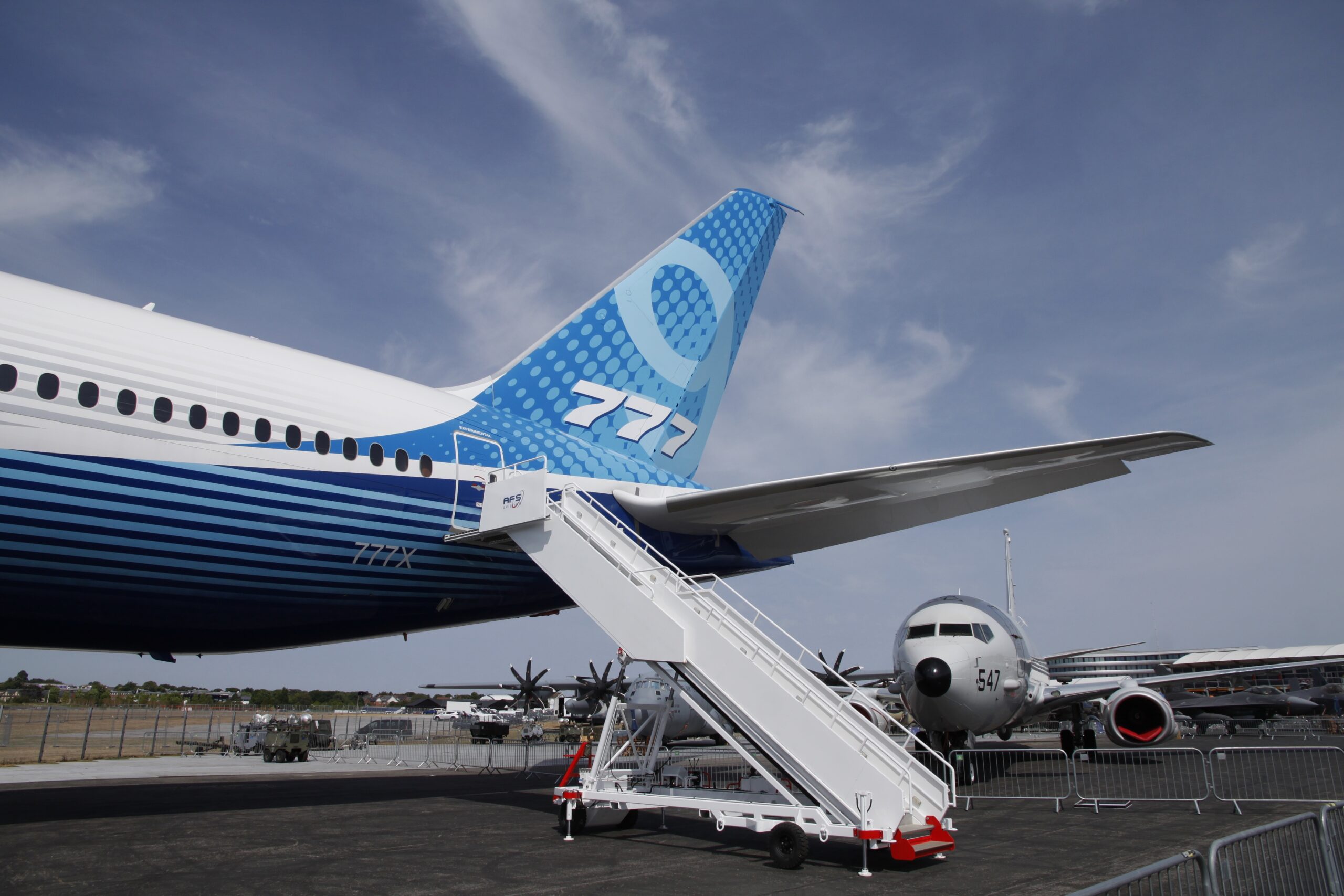
MG 7884 scaled
Boeing intends to significantly ramp up the production rates of all its commercial aircraft projects in 2025-2026 and intends to strengthen its financial position. Boeing shared its plans today during its Investors Conference in Renton. Boeing wants to get back to 800 deliveries and higher rates in 2025-2026.
The production rate of the MAX is scheduled to go up to fifty aircraft per month, “which is a number we have done before”, said Chief Financial Officer Brian West. The MAX currently is in the low-thirties, predominantly because higher rates are restricted by lower engine deliveries from CFM and other supply chain issues. “The supply chain really is our limiter”, said Boeing Commercial Aircraft President and CEO, Stan Deal.
Almost daily discussions with suppliers give Boeing the confidence that higher rates are possible, but Group President and CEO David Calhoun acknowledged that next year will be crucial to solving the issue of structural casting shortages if it wants to get to fifty MAX in 2025-2026. He also said that “the stated objective is not fifty. Our stated objective is stability in production.” Fifty will be more likely to be the rate if China is included. For now, the country continues to backtrack on the return to service of the MAX which is preventing Boeing to deliver airplanes and conclude new orders.
Fuselage defects on the MAX
The MAX rate hit 37 in September but was down to 23 in October as quality managers noticed a defect on some aircraft, said Deal: “In the last moment, our quality management system caught the defect in the fuselage, two defects, and it delayed deliveries. We will recover on that quickly and we will recover deliveries at the end of the year. But that adverse quality that we had to manage out of the system had an impact.”
As West said last week during the Q3 earnings call, MAX rates will remain in the low thirties in the first half of 2023 but go to the low forties in the second half of next year. “That gives us time to stabilize the supply chain in the factory and even talk about getting ready for a rate ramp”, said West.
Stan Deal said that Boeing anticipates getting regulatory approval for the MAX 7 “either later this year or early into 2023. On the MAX 10, we continue to work with the FAA and we anticipate the closure of certification by late 2023 or early 2024.” Boeing will introduce a new flight management system on the MAX that will be produced by Boeing itself.
787 production to ten per month
The 787 should be back to ten per month in 2025-2026. Although deliveries resumed in August after an eighteen-month pause over production quality issues, the Dreamliner is produced at very low rates. The plan is to get back to five per month before doubling that to ten, which is still lower than the fourteen per month Boeing used to build pre-pandemic. An enhanced growth-weight version will be introduced in the near future.
The 777 and 777X will go to four per month, up from the current three. Deliveries of the 777-9 will commence only in 2025 after Boeing announced a delay from late 2024 to early 2025 earlier this year a certification takes more time. Boeing Commercial Airplanes President and CEO Stan Deal said that the passenger version of the 777-8 will be launched before the end of the decade.
Boeing still has to liquidate 270 MAX and 115 787s that are in inventory, including various MAX that are there since the production was reduced after the grounding in March 2019. The inventory also includes 138 aircraft for Chinese customers of which Boeing intends to remarket. The 787s in inventory are there since production was paused in May 2021 and need rework. The final 787s are expected to leave inventory in early 2025. This means that 2026 will be the first year since 2018 without deliveries from inventories.
Deliveries back to 2018 levels
In 2025-2026, Boeing should deliver around 800 airliners again, which is back to the 2018 level when it delivered 806. Consolidated revenues should grow to approximately $100 billion and operating margins to around ten percent. “The revenue margins aren’t big, unrealistic assumptions, these are things we are confident we can execute on”, said West. Free cash flow should go up from $3.0 to $5.0 billion in 2023 to $10 billion, to which BCA will contribute some $6.0 billion. Production transitions and higher production will bring $2.7 billion in cash flow improvements. Operating cash flow is projected to grow to $12 billion (BCA $9.0 billion), which will push debt down from the current $55 billion to levels “that look more normal to you”, said West. Capital expenditures to $2.0 billion plus $3.5 billion in R&D.
Group President and CEO David Calhoun said that Boeing will not launch a new aircraft program anytime soon. As he said before, he has no appetite to fight the Airbus A321XLR in the middle of the market. Without referring to this aircraft, Calhoun said: “I don’t want to fill a niche, I want an aircraft that is thirty to forty percent more efficient.” He also reiterated that Boeing isn’t ready for hydrogen, although it has done extensive research programs. As he said in July during the Farnborough Airshow, Chief Sustainability Officer Chris Raymond said that sustainable aviation fuel and other future options like electrification are part of Boeing’s sustainability strategy. Hydrogen is further out toward 2050, but safety and infrastructure are the two obstacles.
Views: 71





